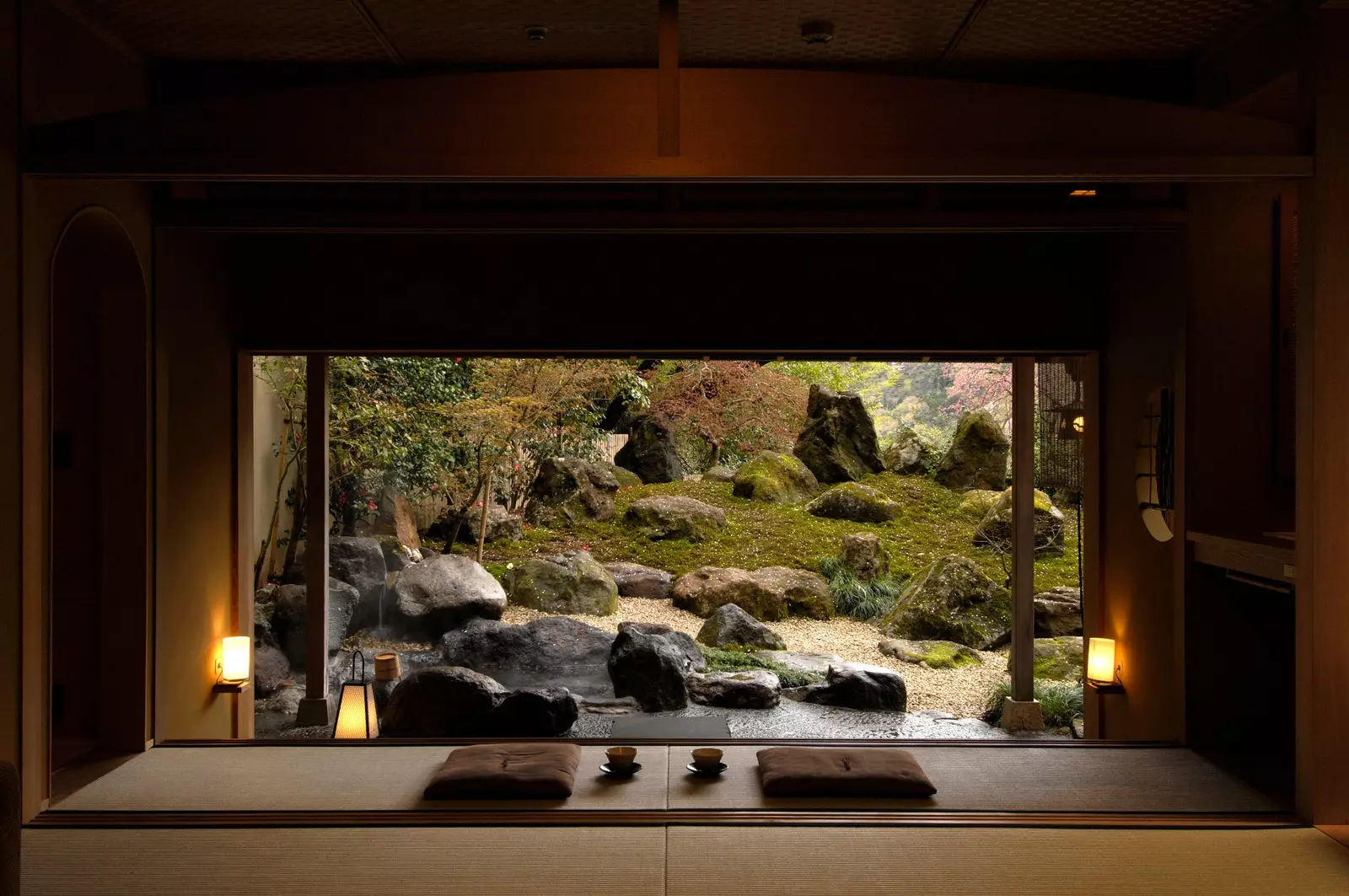
The simple luxury of a ryokan
There was a time when samurai -whose life was quite nomadic- silk merchants or imperial officials spent much of their existence traveling between one end of the continent and the other. Japan . Were long and exhausting trips in which it was necessary to spend the night under a roof somewhere where they could** bathe and eat something before going to bed**. Thus were born the fuseya (rest houses) , the Buddhist temples that welcomed travelers and, later, already during the heian period , the ryokan.
Today the ryokan is the quintessence of lodging in Japan . Places of ingrained customs that to Western eyes are —like so many other things in this country— strange and exotic. These days, most ryokanes have become luxury accommodations and this is its user manual:
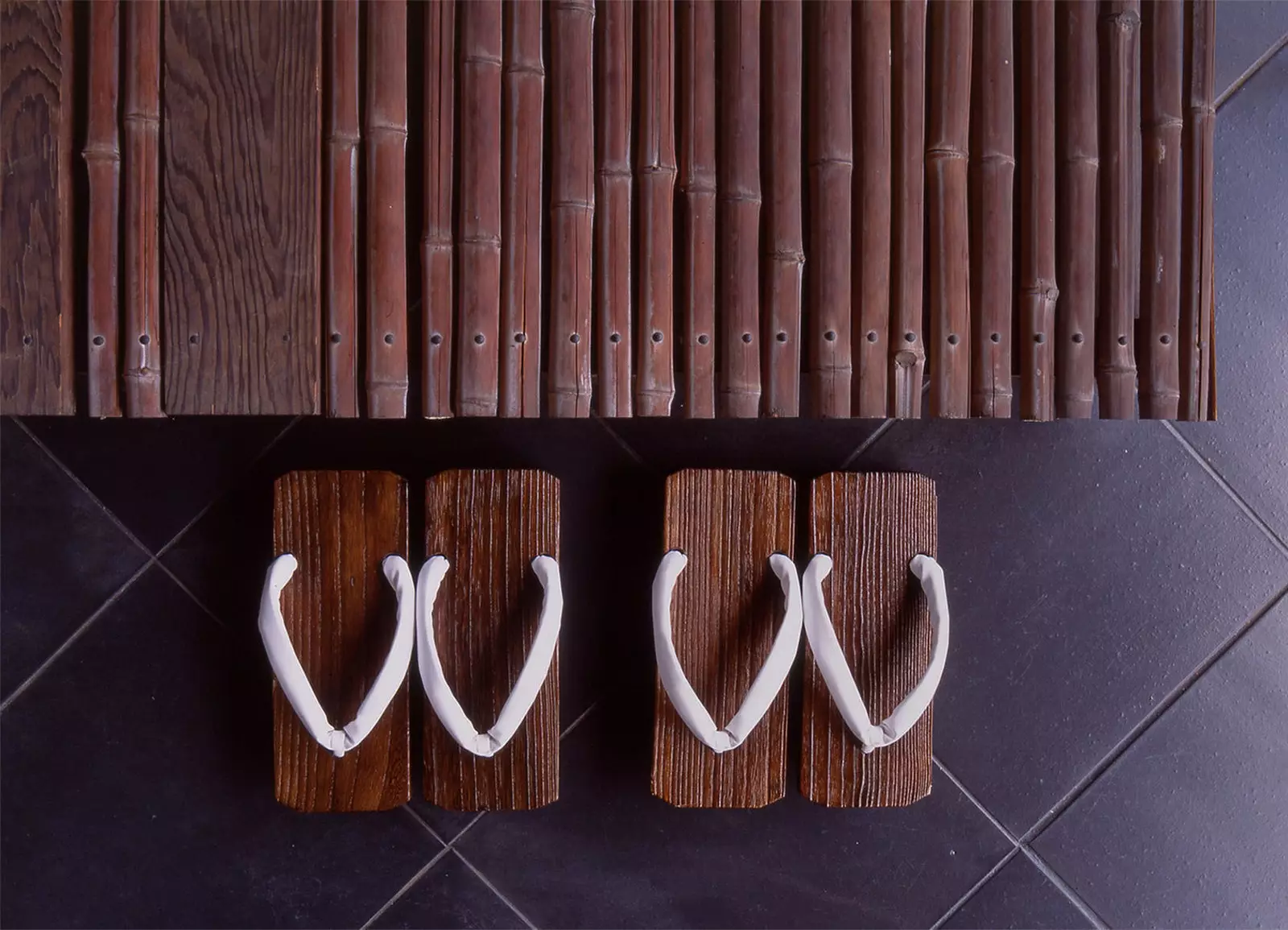
The simple luxury of a ryokan
THE ROOM
The traditional architecture is one of the main features of the ryokan. Many of them occupy old houses that have been inns for many decades, some even centuries. The rooms usually have tatami floor Y sliding wooden doors . Many of them also have access to a private garden.
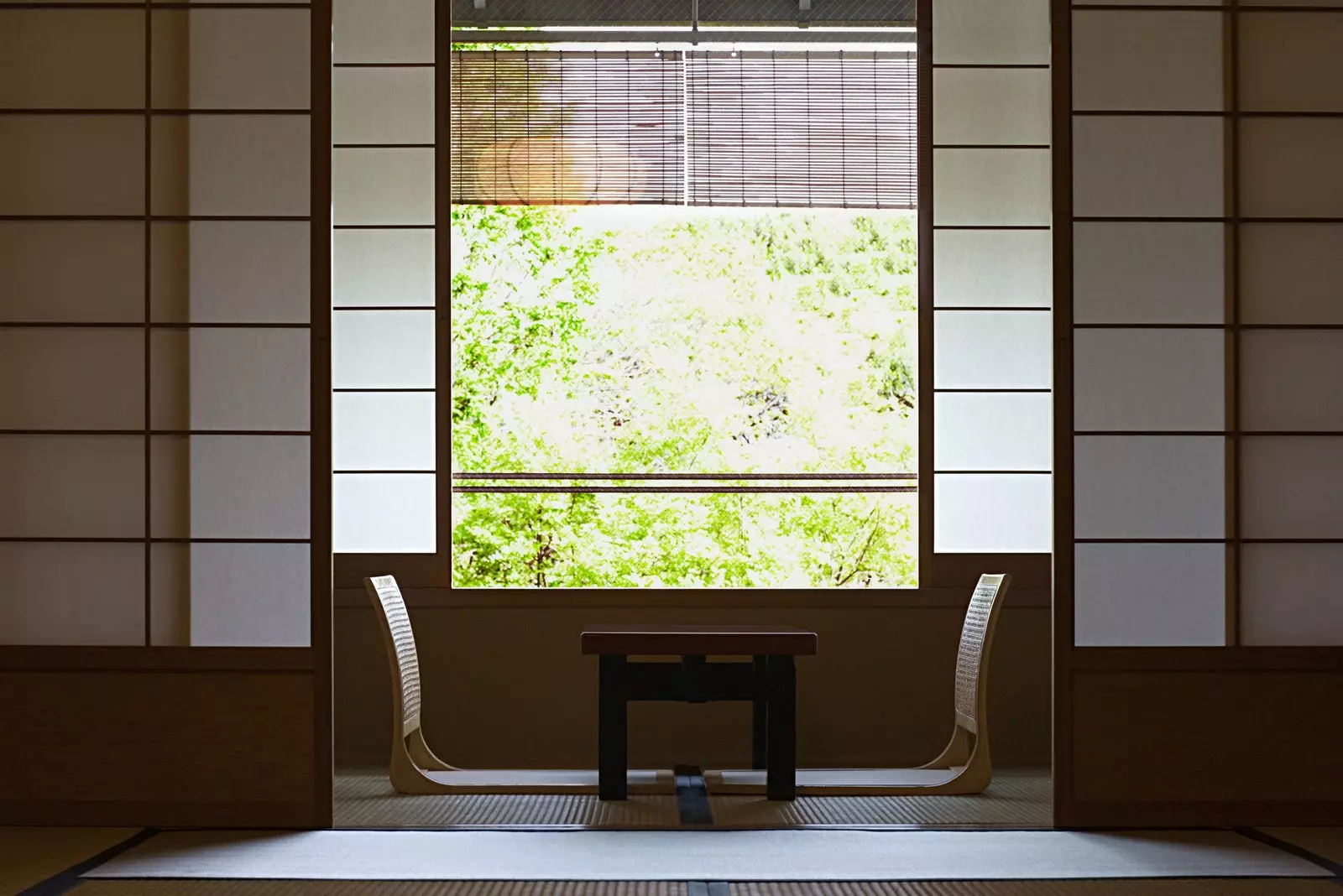
The tatami is sacred: take off your shoes and put on the 'geta' or 'setta' to walk around your room
The curious thing about the rooms is not so much their architecture —that too— but its versatility : the stay acts as a bedroom and dining room at the same time . During the day the rooms are equipped with a low wooden table and cushions to sit on the floor. When night comes, a futon (a mattress that is spread directly on the tatami) will replace the space occupied by the table.
***DRESS CODE***
In these lodgings —as in all Japanese houses— the shoes stay at the entrance . That is why on our arrival they will lend us some sandals that are usually made of wood ( geta ) or leather ( setta ) to move around the enclosure. We will also have cotton kimono or yukatas at our disposal; rest clothing that we must wear both in the room and to go to the common areas.
**STAFF **
The ryokan tradition is that the business passes from generation to generation within the same family. The person responsible for it - who is usually a woman - is the okami . she is who will welcome us and who tells us about the history and peculiarities of the place. Then there are the nakai-san , the people who will attend us in our room. They will take care of serve us meals in the room , of serve us tea , to change tables for the futon and vice versa, as well as to meet any need we may have. They come to be like luxury hotel butlers.
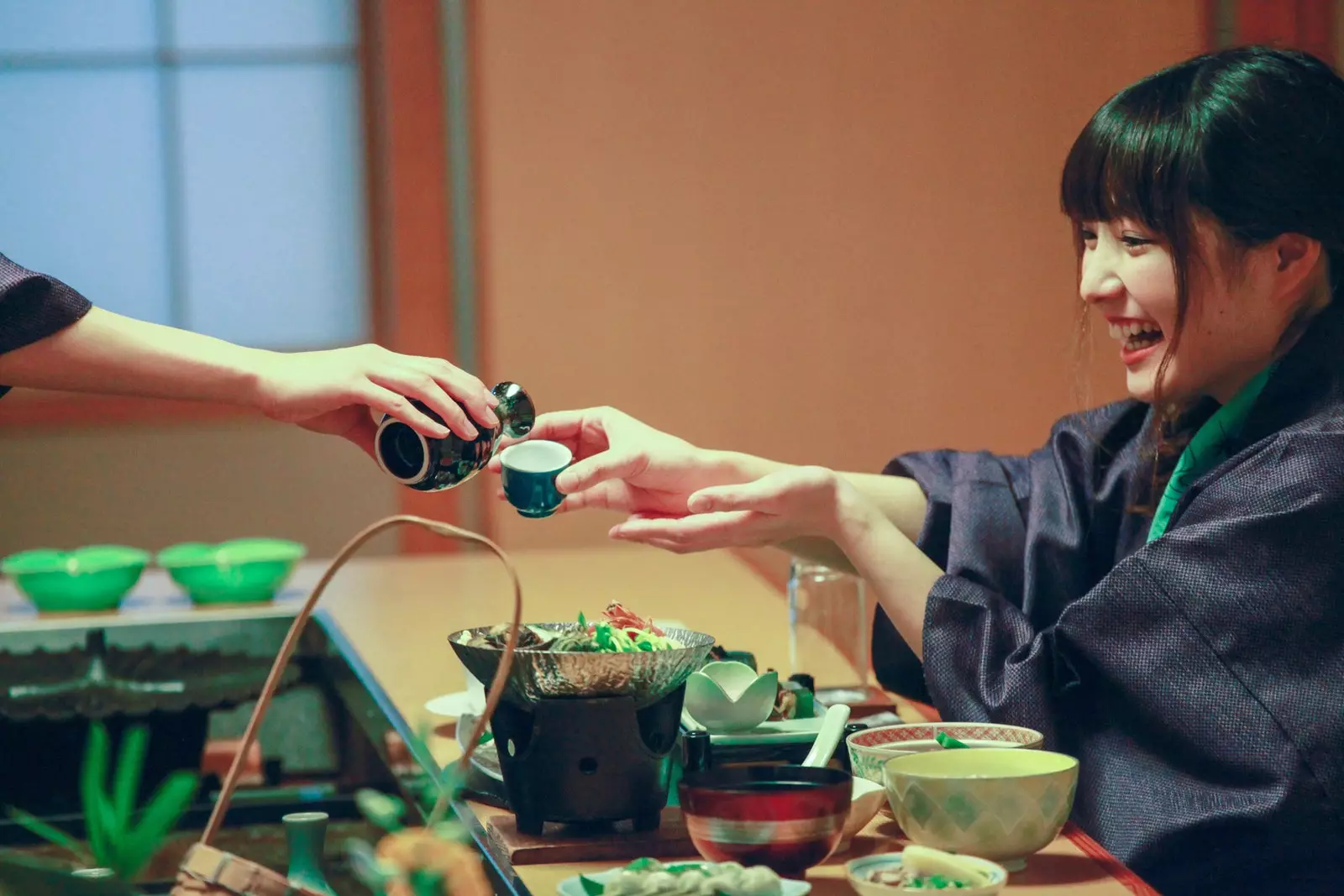
Hospitality is everything in a ryokan
MEALS
Almost all ryokans have half board Y both breakfast and dinner are served in the room itself . In recent times and for reasons of customer comfort, many have also opened restaurants where (optionally) we can go for meals. Ryokan dinners usually consist of a kaiseki menu , Japanese haute cuisine, a whole gastronomic culture in which ancestral practices and traditions are taken into account.
A typical agape kaiseki includes between 6 and 15 dishes prepared with fresh, local and seasonal ingredients such as sautéed vegetables, raw and fried fish, rice, wild edible plants ... Each plate is elaborately decorated and consists of various saucers and bowls that help enhance its beauty.
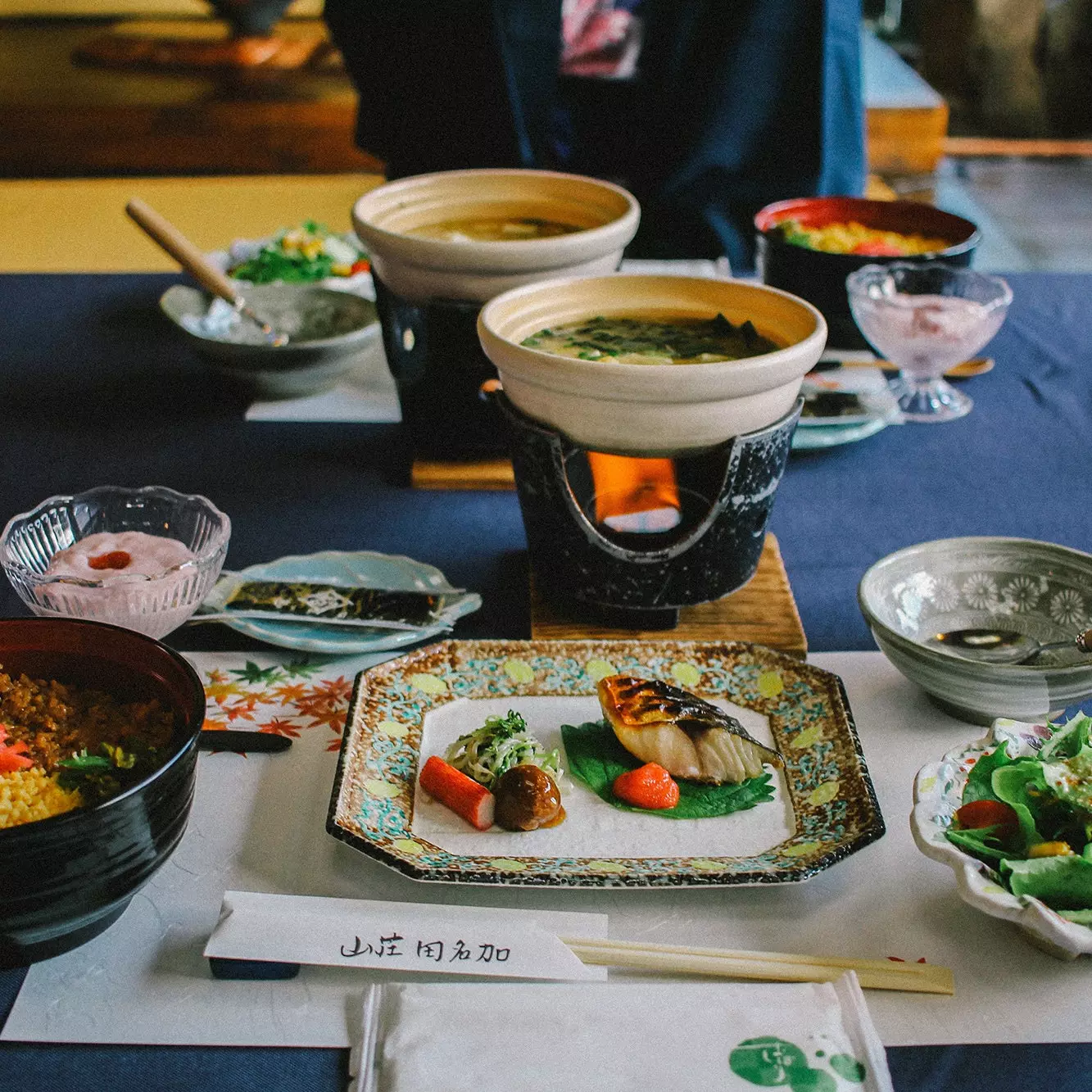
A kaiseki menu in the room: this is how you eat in a ryokan
THE TRADITIONAL JAPANESE BATH
All ryokan have one version or another of the traditional japanese baths : either a sat (public bath), a onsen (hot spring bath) or a hot tub (private bathtub). Bathing is an important part of Japanese culture, an almost sacred space in which they must respect series of rituals (especially in those that are in common use).
For starters, unless otherwise noted, the bathrooms are strictly separated by sex and you have to enter them naked . Necessary lather up and rinse well before entering the pools and eye! because many public toilets do not allow entry to people with tattoos . Some places offer patches or stickers to cover them whenever possible by size; if not, we will always have the option of renting a private bathroom ( hot tub).
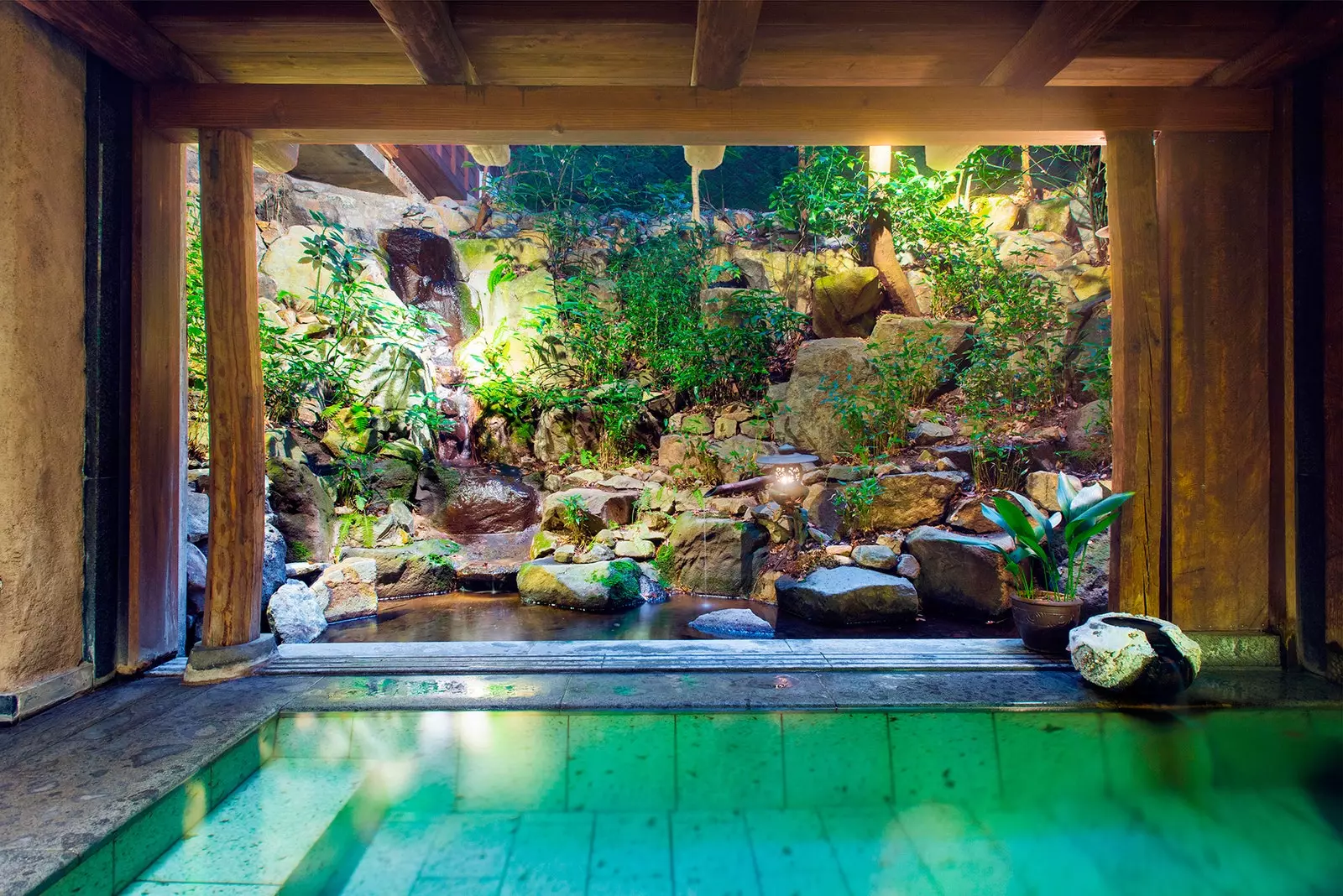
japanese sento
LIFE AT THE RYOKAN
in Kyoto
Hiiragiya Ryokan. Built in 1818 , is one of the most prestigious and picturesque in the city. It has two wings, the oldest, in which important personalities of all times have stayed — Charles Chaplin among them — and the modern one that also respects tradition but with a more contemporary atmosphere. It is the greatest expression of Japanese refinement.
in Hakone
gora kadan . Located in what was once a Former summer villa of a member of the imperial family , this ryokan combines the tradition of this type of accommodation with modern design elements . In addition to rooms with the usual futon on the floor, it also has rooms with Western-style beds.
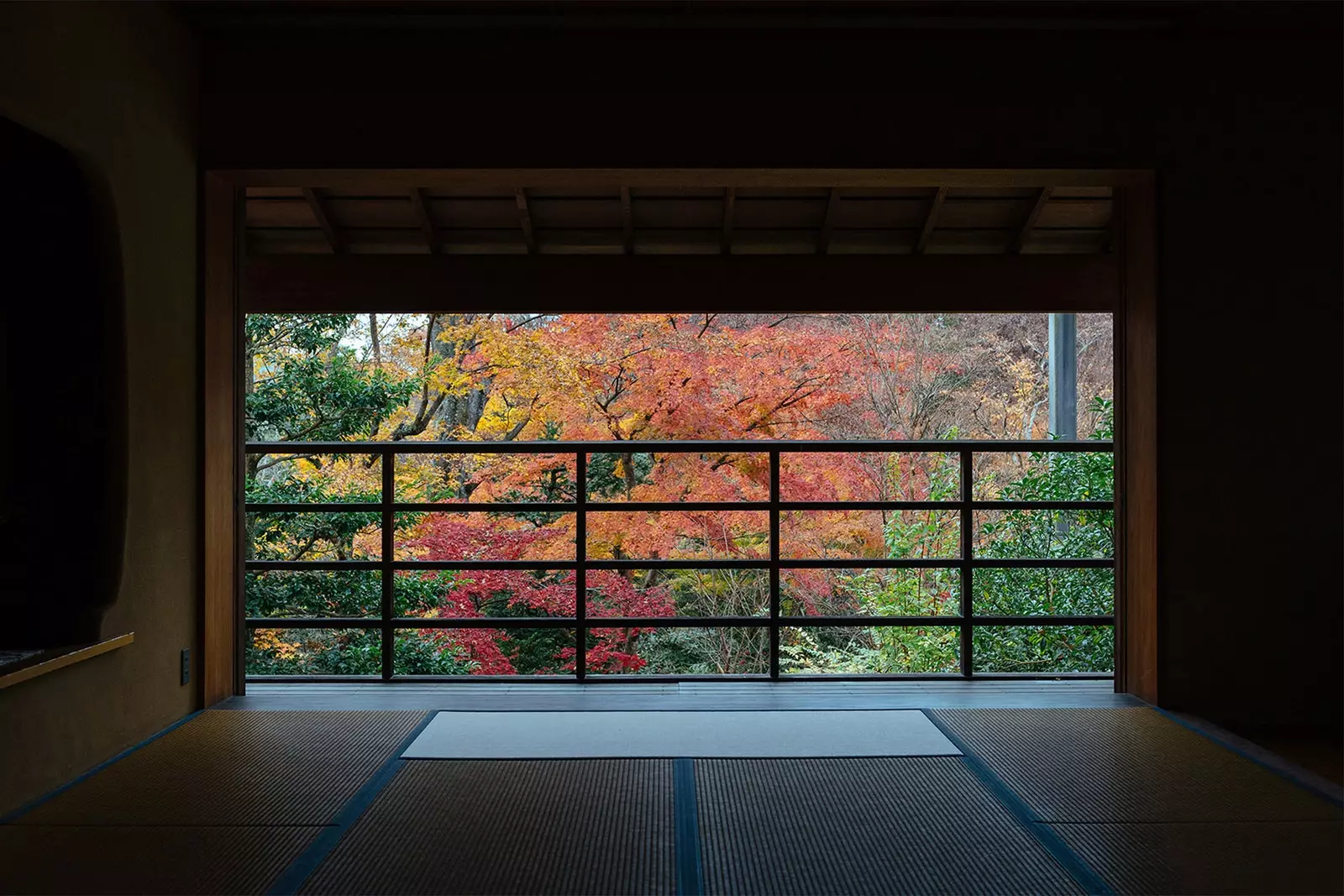
The simple luxury of a ryokan
in tokyo
sadachido . One of the few traditional ryokans left in vibrant Tokyo retains its Edo period atmosphere thanks to the multitude of antiques that decorate it. It is located in the popular asakusa neighborhood.
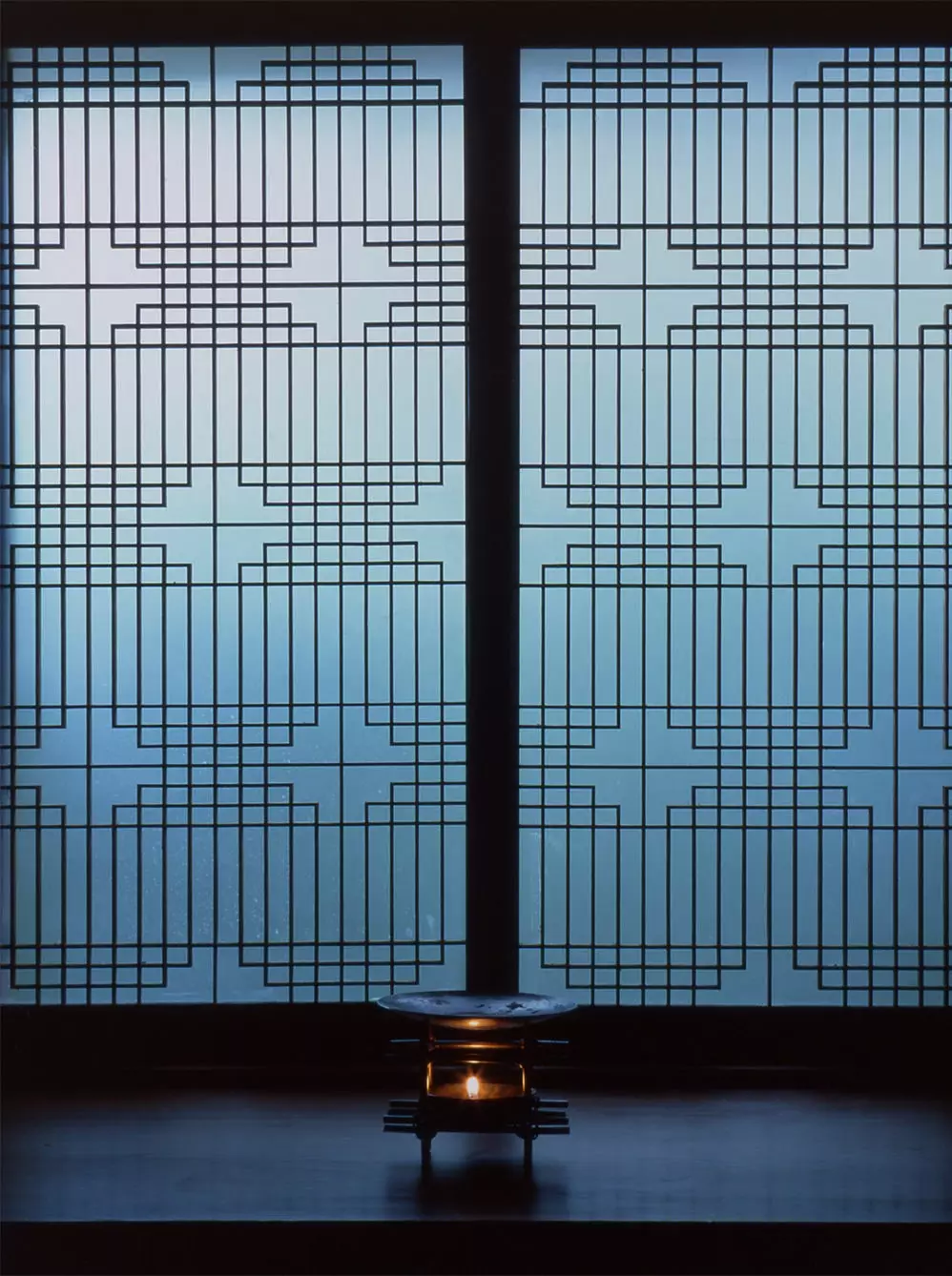
The simple luxury of a ryokan
